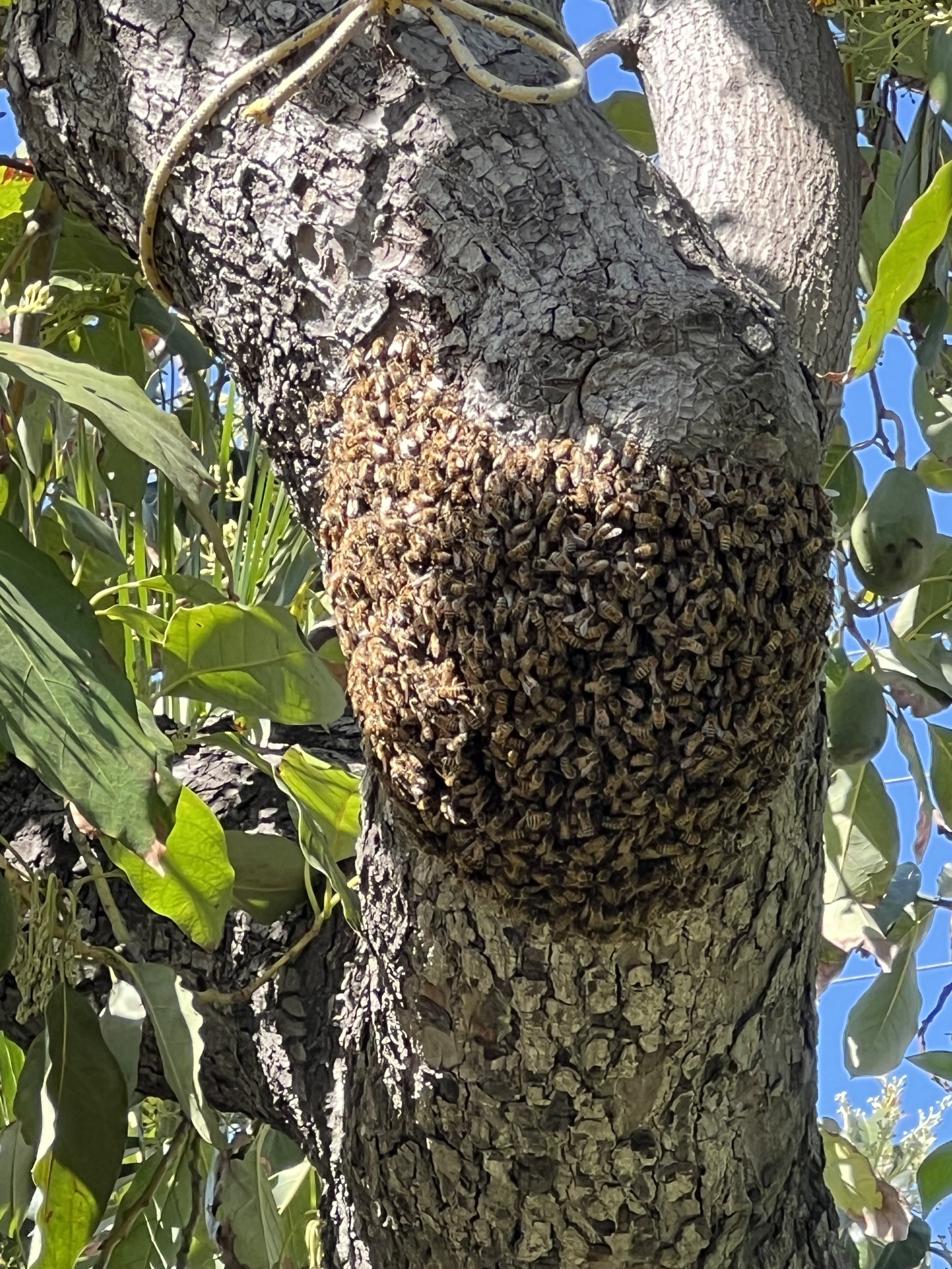The Rhythm of the Bees
Hey hello!
This week we’re talking bees! Sunday morning I woke up to a swarm of bees clustered on a branch of our avocado tree.
While I was quite nervous at first, a local beekeeper I called assured me that this was very normal, especially for this time of year. When a hive grows too large, half of the colony, including the old queen, leaves to establish a new hive in a different location. The original hive will raise a new queen to take over in the old queen’s absence. This is a natural method of hive reproduction.
During this process, worker bees, and specific numbers of specialty bees, along with the queen leave the hive and cluster nearby as scout bees search for a good location to start building the new hive. This is what I saw this weekend. The local beekeeper said that most likely this cluster would fly off within a few hours to their new chosen build site.
As I sat down in a lawn chair to enjoy the afternoon sun, I fell down into the depths of beekeeping Reddit pages. I followed arguments between beekeepers regarding the merits of allowing the bees in their apiaries to swarm naturally, guided by their own biological drive, versus the beekeepers themselves splitting the colonies in half. I was roused from this reading by a great buzzing. Looking up from my phone, the sky was filled with a bee tornado. The cluster on the avocado branch rapidly diminished as the bees collectively flew off to their new hive.
In a world with fewer and fewer bees, I felt very grateful to witness this natural rhythm of one of earth’s most precious creatures.
If you’d like to know more about this process in bees, check out this video:
I also have a new dreamy, groovy playlist for spring right here:

